
The 1998 Pacific typhoon season was at the time the least active Pacific typhoon season on record, until the record was surpassed 12 years later, spawning 16 tropical storms and 8 typhoons. The scope of this article is limited to the Pacific Ocean, north of the equator and west of the international date line. Storms that form east of the date line and north of the equator are called hurricanes; see 1998 Pacific hurricane season. Tropical Storms formed in the entire west Pacific basin were assigned a name by the Joint Typhoon Warning Center. Tropical depressions in this basin have the "W" suffix added to their number. Tropical depressions that enter or form in the Philippine area of responsibility are assigned a name by the Philippine Atmospheric, Geophysical and Astronomical Services Administration or PAGASA. This can often result in the same storm having two names.

The 1997 Pacific typhoon season was a record-breaking season featuring 11 tropical cyclones reaching super typhoon intensity, tying the record with 1965 with the most violent tropical cyclones globally. It has no official bounds; it ran year-round in 1997, but most tropical cyclones tend to form in the northwestern Pacific Ocean between May and November. These dates conventionally delimit the period of each year when most tropical cyclones form in the northwestern Pacific Ocean.

The 1978 Pacific typhoon season was a very active season that produced 31 tropical storms, 16 typhoon and one intense typhoon. It has no official bounds; it ran year-round in 1978, but most tropical cyclones tend to form in the northwestern Pacific Ocean between June and December. These dates conventionally delimit the period of each year when most tropical cyclones form in the northwestern Pacific Ocean.

The 1964 Pacific typhoon season was the most active tropical cyclone season recorded globally, with a total of 39 tropical storms forming. It had no official bounds; it ran year-round in 1964, but most tropical cyclones tend to form in the northwestern Pacific Ocean between June and December. These dates conventionally delimit the period of each year when most tropical cyclones form in the northwestern Pacific Ocean.

The 1960 Pacific typhoon season had no official bounds; it ran year-round in 1960, but most tropical cyclones tend to form in the northwestern Pacific Ocean between June and December. These dates conventionally delimit the period of each year when most tropical cyclones form in the northwestern Pacific Ocean.

Typhoon Patsy, known in the Philippines as Typhoon Yoling, was the twenty-seventh named storm, twelfth typhoon, and seventh super typhoon of the 1970 Pacific typhoon season.
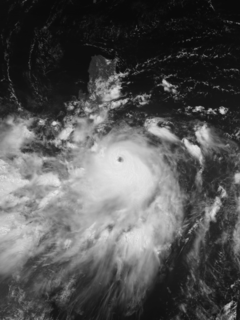
Typhoon Fengshen, known in the Philippines as Typhoon Frank, was the sixth named storm and the fourth typhoon recognised by the Japan Meteorological Agency. The Joint Typhoon Warning Center recognised Fengshen as the seventh tropical depression, the sixth tropical storm, and fifth typhoon of the 2008 Pacific typhoon season.
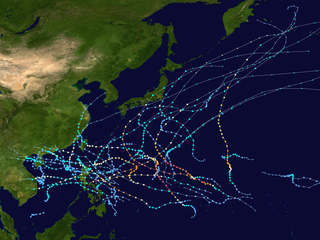
The 2009 Pacific typhoon season was a below average season that spawned only 22 named storms, 13 typhoons, and five super typhoons. It was also recognized as the deadliest season in the Philippines for decades. The first half of the season was very quiet whereas the second half of the season was extremely active. The season's first named storm, Kujira, developed on May 3 while the season's last named storm, Nida, dissipated on December 3.
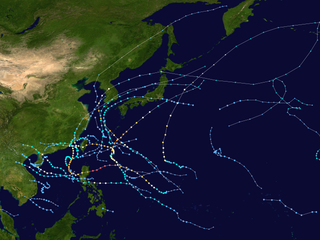
The 2010 Pacific typhoon season was the least active Pacific typhoon season on record, featuring only 14 named storms; seven of them strengthened into typhoons while one reached super typhoon intensity. The Pacific typhoon season during 2010 was in fact less active than the 2010 Atlantic hurricane season, with only two other occurrences of that happening, 2005 and 2020(however these two were hyperactive in terms of tropical storms, 28 each). In the same year, the Pacific hurricane season broke the same record being the least active season on record. During the season, no storms made landfall in mainland Japan, the only second such occurrence since 1988. Also, all of the 14 named storms developed west of 150°E.

Typhoon Ketsana, known in the Philippines as Tropical Storm Ondoy, was the second-most devastating tropical cyclone of the 2009 Pacific typhoon season, causing $1.09 billion in damages and 747 fatalities, only behind Morakot earlier in the season, which caused 789 deaths and damages worth $6.2 billion. Ketsana was the sixteenth tropical storm, and the eighth typhoon of the season. It was the most devastating typhoon to hit Manila, surpassing Typhoon Patsy (Yoling) in 1970.
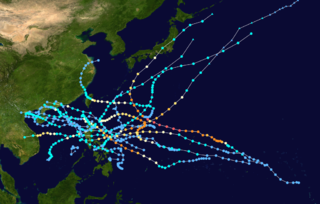
The effects of the 2009 Pacific typhoon season in the Philippines were considered some of the worst in decades. Throughout the year, series of typhoons impacted the country, with the worst damage occurring during September and October from Typhoons Ketsana and Parma.

Typhoon Elsie, known in the Philippines as Typhoon Tasing, was one of the most intense known tropical cyclones to make landfall in the Philippines. A powerful Category 5 super typhoon, Elsie formed out of a tropical disturbance on October 13, 1989, and initially moved relatively slowly in an area of weak steering currents. On October 15, the storm underwent a period of rapid intensification, attaining an intensity that corresponds to a Category 3 hurricane on the Saffir–Simpson Hurricane Scale. After taking a due west track towards the northern Philippines, the storm intensified further, becoming a Category 5 super typhoon hours before making landfall in Luzon. After moving inland, the typhoon rapidly weakened to a tropical storm. Once back over water in the South China Sea, wind shear prevented re-intensifcation. Elsie eventually made landfall in Vietnam on October 22 and dissipated the following day over Laos.
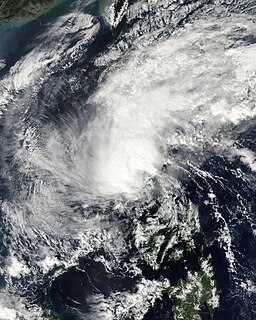
Tropical Depression Winnie was a weak, but catastrophic tropical cyclone that killed nearly 1,600 people after triggering widespread flooding in the Philippines. It was the second deadliest tropical cyclone of 2004 worldwide, only surpassed by Atlantic Hurricane Jeanne. A depression, which formed east of Samar, brought heavy rain to areas where it passed through, and affecting many areas, owing to Winnie’s large cloudiness.
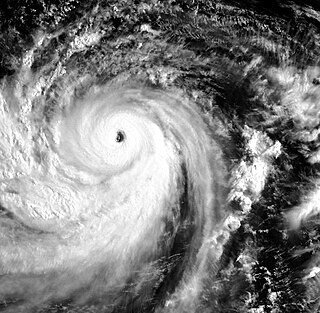
Typhoon Winnie, known in the Philippines as Typhoon Ibiang, was the worst tropical cyclone to impact the Chinese provinces of Zhejiang, Fujian, Jiangsu, and Shandong in 200 years. Originating from an area of low pressure over the Pacific Ocean on August 5, 1997, the system organized into a tropical depression. It headed northwestward, slowly strengthening into a tropical storm on August 9. Intensification became more rapid as conditions became more favorable, and Winnie reached typhoon strength on August 10. On August 12, 1997, Winnie attained Super Typhoon status, with peak 1-minute sustained winds of 160 mph. Winnie then weakened and passed north of Taiwan, before making landfall in Eastern China at Category 1-equivalent typhoon strength on the August 18. Winnie continued northeast over land while weakening, bringing heavy rainfall before dissipating on August 23.
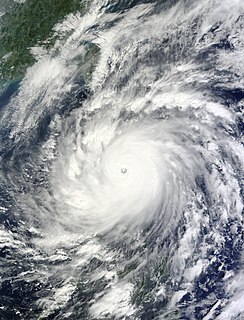
Typhoon Megi, known in the Philippines as Typhoon Juan, was one of the most intense tropical cyclones on record. Megi, which means catfish in Korean, was the only super typhoon in 2010. Early on October 18, Megi made its first landfall over Luzon. By passing Luzon, Megi weakened but gradually regained strength in the South China Sea, before weakening and losing its eye in the Taiwan Strait. Megi made its second landfall over Zhangpu in Fujian, China on October 23.

Severe Tropical Storm Nock-ten, known in the Philippines as Tropical Storm Juaning, was a strong tropical storm which made a total of four landfalls in Southeast Asia, killing more than 100 people and causing damage estimated at US$126 million. It was the eighth named storm and the fourth severe tropical storm of the 2011 Pacific typhoon season.
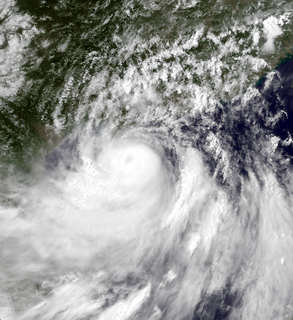
Typhoon Vera, known in the Philippines as Typhoon Bebeng, brought significant flooding to the Philippines in July 1983. The monsoon trough spawned a tropical depression on July 12 east of the Philippines. Although the depression was initially slow to organize, the system headed west-northwestward, strengthening to a tropical storm the following day and a typhoon on the July 14. Vera moved onshore early the next day as a minimal typhoon in the Philippines before weakening slightly over the islands. However, Vera managed to restrengthen over the South China Sea while accelerating, later attaining winds of 85 mph (135 km/h). After crossing Hainan while still at peak intensity and moving into the northern portion of the Gulf of Tonkin, Vera gradually weakened before moving ashore in northern Vietnam on July 18. By July 19, Vera had dissipated inland.

Tropical Storm Rumbia, known in the Philippines as Tropical Storm Toyang, brought deadly flooding to the central and southern Philippines in November and December 2000. The last of three consecutive tropical cyclones of at least tropical storm intensity to strike the Philippines, Rumbia began as a tropical depression on November 27, gradually intensifying to reach tropical storm intensity the next day. Strengthening later stagnated, and Rumbia would weaken back to depression status as it made landfall on the central Philippines on December 1. Though the Japan Meteorological Agency (JMA) determined Rumbia to have dissipated on December 2, the Joint Typhoon Warning Center (JTWC) continued to monitor the system over the next few days as it tracked across the South China Sea. For a period of time beginning on December 5, Rumbia reorganized and strengthened back to tropical storm intensity before wind shear began to weaken the system. Located south of Vietnam on December 7, the storm's circulation center became devoid of convection, and by then Rumbia was declared by the JTWC to have dissipated.

Typhoon Nanmadol, known in the Philippines as Typhoon Yoyong, was the last of four consecutive tropical cyclones to strike the Philippines in 2004. A quickly moving system, Nanmadol brought heavy rainfall and strong winds over the same regions impacted by the previous storms, exacerbating flood conditions in Luzon and surrounding regions. Together Nanmadol and these systems accounted for around 1,000 deaths in the Philippines. The typhoon later became the first December tropical cyclone to strike Taiwan since record keeping began, bringing along with it heavy rain, which also affected nearby regions of eastern China. As an extratropical storm, Nanmadol brought gusty winds and rain to Japan.

The effects of the 2013 Pacific typhoon season in the Philippines were considered some of the worst in decades. Throughout the year, series of typhoons impacted the country, with the worst damage especially death toll from Typhoon Haiyan during November.





















